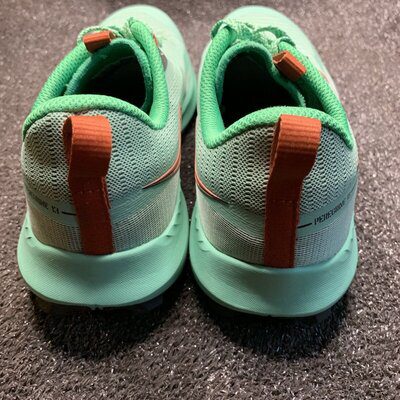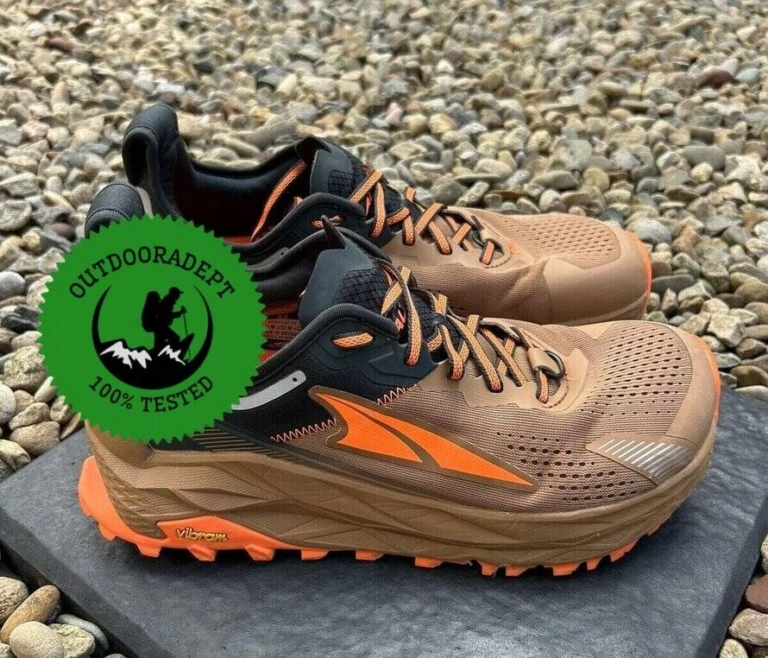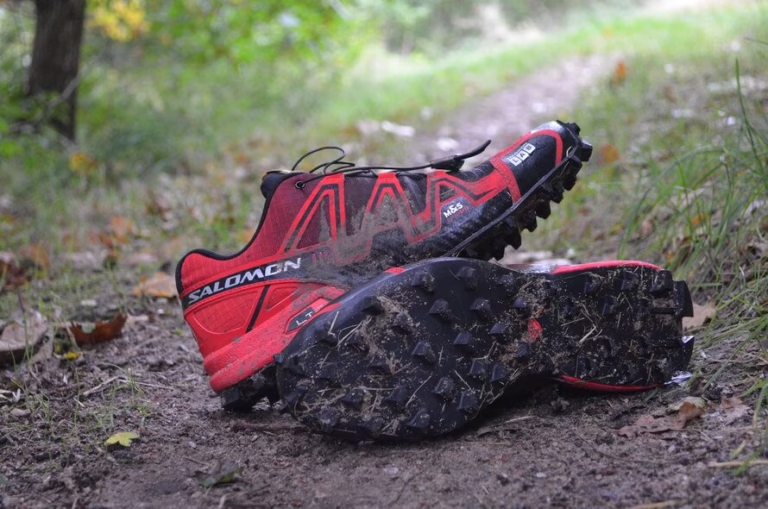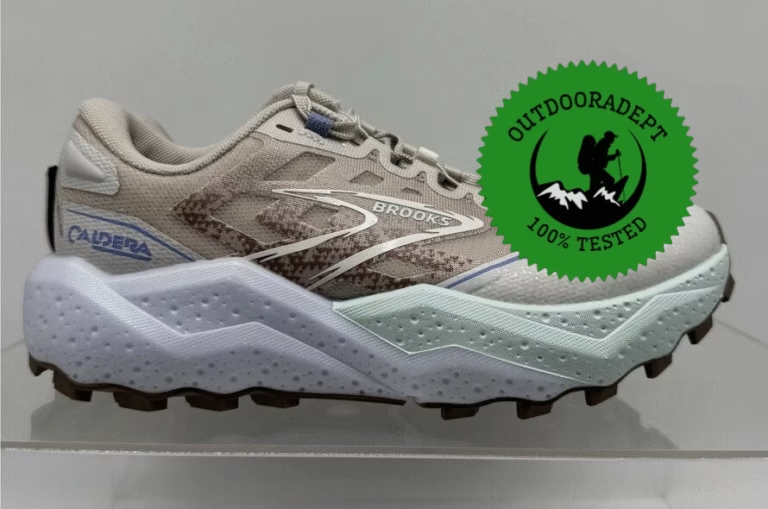Comfy and adaptable, the Saucony Peregrine 13 became my top pick for tackling the trails at Horton Plains National Park. I also tried out the ST version there in the same week.
Our Verdict
Saucony Peregrine 13
For me, the Peregrine line equals good comfort without extra weight, and I usually use these trail runners for faster efforts.

I was impressed with the upgraded Saucony Peregrine 13 ST, which now offers enhanced cushioning thanks to additional PWRRUN foam for better comfort on muddy trails. Even though it’s slightly less breathable than some other trail shoes, this line excels on technical terrain with sharp rocks and muddy patches.
I found the ST model’s rock plate and toe bumper deliver a nimble ride, effectively keeping pebbles at bay even as my pace quickened. During longer runs on uneven surfaces, the shoes consistently demonstrated impressive performance.
This is a discontinued product. For Sauconys latest product, check out our Saucony Peregrine 15 Review.
The combination of the PWRRUN midsole and rugged outsole provided great energy return, which enabled me to tackle extended mountain treks with confidence.
Additionally, the comfortable ankle collar and excellent lacing system ensure a secure fit, making these shoes versatile enough for both pavement and challenging trails.
In our detailed review of the Saucony Peregrine 13, we put the shoe through tests on diverse terrains like flat, rocky, muddy, and gravel paths. Its ability to repel water was thoroughly checked under rainy conditions, and we also examined how it performed in hot climates. Over several days, our team and independent experts evaluated the shoe to understand its break-in time and level of comfort. We assessed the Saucony Peregrine 13 against important factors including fit, cushioning, tread, and breathability. By aggregating the scores from these evaluations and incorporating feedback from users and the manufacturer’s warranty, we crafted a comprehensive analysis of this hiking shoe.
Highlights
| Feature | Saucony Peregrine 13 |
|---|---|
| Weight | ~9.4 oz (approx. 266 g) per pair (men’s size 9) |
| Water Resistance | Not waterproof; breathable mesh upper |
| Traction | PWRTRAC rubber outsole with 5mm multidirectional lugs; effective on various terrains |
| Comfort | PWRRUN midsole; responsive cushioning; flexible design |
| Adjustability | Traditional lacing system; secure fit |
| Breathability | Engineered mesh upper; suitable for warm conditions |
| Durability | Reinforced upper; solid outsole; minor wear after 80+ miles |
| Arch Support | Moderate; suitable for neutral to slightly overpronated runners |
| Toe Protection | Protective toe cap; adequate for most trail conditions |
PROS
CONS
Things We Tested When We Reviewed Saucony Peregrine 13
1. Traction

When I tested the Saucony Peregrine 13 on various terrains – from muddy trails to loose gravel – I was struck by how well they stuck to the ground.
The shoe features multidirectional lugs on the outsole, about 5mm deep, which provided reliable traction on uneven surfaces and in various conditions such as rain and mud.
The Peregrine 13 delivered a dependable grip, preventing slips and slides even on harder surfaces.
However, I did notice that on wet rocks or mossy patches, the classic Peregrine 13 experienced a slight decrease in grip. While this wasn’t a major issue, it’s something to be mindful of in slippery conditions.
In contrast, the ST model handled these areas without any problems. It offered strong adherence and a softer feel, which meant my feet didn’t tire as quickly compared to other shoe options.
2. Durability
Both trail shoe models demonstrated comparable durability overall. The materials used in their construction, including the upper and outsole components, exhibited similar levels of resistance to wear and tear.
However, I want to highlight that the Peregrine ST is specifically designed to excel in muddy and soft conditions.
While it offers excellent traction in such trail conditions, the softer outsole may show faster signs of wear when used extensively on rocky or abrasive surfaces compared to the regular Saucony Peregrine 13 model.
In contrast, the standard Peregrine 13 model, with its versatile outsole, provided exceptional toughness on rocky, technical terrain. Its outsole rubber compound and overall construction held up well, showing minimal signs of wear even after extensive use.
3. Comfort

When it comes to comfort, both Peregrines proved to be highly comfortable trail running shoes, with a rock plate feature designed to shield against sharp rocks and trail debris, despite their stiff heel cup.
The Saucony Peregrine 13 featured a responsive and well-padded midsole that offered excellent shock absorption.
It provided a good balance between padding and ground feel, allowing me to feel connected to the trail while still enjoying a comfortable ride.
Similarly, the Peregrine ST offered a secure fit and feel. Despite the softer outsole designed for muddy trails, the shoe maintained a good level of cushioning and responsiveness.
The plush collar and tongue added to the overall comfort by providing a snug yet comfortable fit around the ankle.
4. Breathability
The Saucony Peregrine 13 came with a breezy upper that helped air flow and kept feet dry and comfy during runs.
Its upper was made of a light mesh with tiny holes that added to its breathability without sacrificing durability over time.
The Peregrine ST also offered decent airflow, even with a thicker upper meant for muddy trails.
But, if they get too wet or are in very damp conditions, they might not breathe as well and could take more time to dry out, which might affect how comfy and airy they feel until they’re completely dry.
5. Weight

The Peregrines 13 struck a good balance between the lighter weight and the necessary features for trail running.
The classical version is a lighter shoe weighing only 1 lb. 2 oz. per pair, and that’s why many runners choose it for daily training.
The ST model, on the other hand, trades a lighter weight for a thicker heel collar and more padding.
Its sole is a bit softer, which helps it perform better in soft areas. It also uses a different upper material for water resistance, which increases its weight to about 1 lb. 4 oz.
6. Waterproofing
When it comes to waterproofing, the Saucony Peregrines exhibit a level of water resistance that can handle light rain showers and shallow water crossings. The upper materials, although not fully waterproof, did a commendable job of repelling water during my tests.
The mesh upper, while breathable, featured a DWR (Durable Water Repellent) coating that helped keep moisture at bay. When running through damp grass or encountering small puddles, the shoe effectively prevented water from seeping in immediately.
However, during prolonged exposure to wet conditions or heavy downpours, some moisture managed to find its way inside. In these situations, my feet did get slightly damp, reminding me of the shoe’s limitations.
7. Support

The midsole of both models incorporates Saucony’s responsive cushioning technology, which helps absorb impact and provide a comfortable ride.
The padding system, combined with a wider platform, offered excellent stability and prevented excessive rolling or twisting of the feet.
Furthermore, the shoe features a supportive heel counter that locks my heel in place, reducing the risk of slippage and enhancing overall stability.
What I noticed, though, is that Peregrine is more geared toward neutral runners or those with mild overpronation. If you have significant overpronation or require additional arch support, it might be worth considering custom insoles.
8. Fit and Sizing
In terms of fit, this shoe has a medium-width profile, which should accommodate most runners well.
The upper material is flexible and molds to the shape of the foot, providing a snug and supportive feel. The toe box also is spacious enough to allow natural toe splay without feeling overly loose.
Regarding sizing, I found that both models ran true to size. I ordered my regular running shoe size, and they fit me perfectly.
It’s worth mentioning that the ST option, being a water-resistant version, may feel snugger initially due to the thicker upper. However, the material does stretch and adapt to the foot over time, so any initial tightness tends to subside after a few runs.
How It Evolved?

Compared to the previous version – Peregrine 12, the Saucony Peregrine 13 model boasts improved adherence with its more aggressive lug pattern, providing a better grip on various trail sections.
It also offers enhanced comfort, thanks to the updated padding system that delivers a plush and responsive feel.
In terms of durability, both the previous version and the new one are reliable, but the ST model takes it a step further with its water-resistant construction for added protection.
However, this feature does add a slight increase in weight compared to the regular Saucony Peregrine 13.
The overall fit and sizing remain consistent, with a secure lockdown design that fits better hikers with narrow feet.
How Does it Compare with Other Products?
Hoka Speedgoat 5

The Saucony Peregrines are comparable to the Hoka Speedgoat 5 in terms of traction and long-lastingness.
Speedgoat’s Vibram® Megagrip outsole is renowned for its good clutch on wet and rocky terrain, equaling Peregrine’s PWRTRAC rubber outsole.
However, the Peregrine series stands out with its overall versatility.
While the Speedgoat 5 delivers excellent support, the Peregrine models strike a better balance between cushioning and responsiveness. This makes them suitable for a wider range of trail sections and long distances.
Additionally, the Peregrine ST offers the advantage of water resistance, providing added protection in wet conditions, which the Speedgoat 5 lacks.
Get to know this product better by checking our Hoka Speedgoat 5 extensive review.
Altra Olympus 5

Equipped with a Vibram outsole and the Altra signature FootShape™ toe box, which provides ample room for toe splay and accommodates a natural foot shape, the Altra Olympus 5 shines in terms of comfort and stability, offering a well-balanced ride.
In contrast, the Peregrine models provide a more snug fit, ensuring a locked-in feel, with more cushion to shield the ankles.
They have an excellent clutch on technical terrain, and the ST model is slightly softer underfoot compared to Altra 5 trail running shoes, providing better adherence through the gravel and other softer terrains.
Learn more about this trail running shoe by checking our complete Altra Olympus 5 review.
Merrell Moab Flight

The Saucony Peregrine 13 and 13 ST offer a more lightweight and nimble experience compared to the Merrell Moab Flight.
While the Moab Flight provides solid surface adherence, the Peregrine models deliver a more aggressive lug pattern that can face challenging trail sections.
The Peregrine ST’s water-resistant feature adds an extra layer of protection in wet conditions, making it a preferred choice for those seeking added versatility.
In terms of comfort, all three shoes offer different cushioning systems, with the Peregrine line providing a responsive and energetic feel.
Where Saucony Peregrine 13 Performs Better?

The Saucony Peregrine 13 is a versatile shoe that performs exceptionally well in dry and moderately technical terrain, offering excellent traction and a lightweight feel.
It is ideal for those who enjoy fast-paced trail running and prefer a trail shoe that can handle shorter efforts during race day training.
Its ST option was created for muddy trail surfaces where it outperforms other shoes easily.
Its aggressive outsole and water-resistant materials provide superior protection, giving you the confidence to tackle challenging trails.
Personally, I found both shoes to be comfortable and supportive, allowing me to push my limits and enjoy my trail runs to the fullest, regardless of the conditions.
Where Saucony Peregrine 13 Falls Short in Performance?
While the Saucony Peregrine 13 and Peregrine ST excel in many areas, there are a few aspects where they fall short in performance.
One of them is the limited arch support, which may not provide enough stability for runners with high arches. Some users reported that the padding felt slightly firm, which could impact long-distance comfort, but I was in fact able to deal with this issue easily by adding a set of cushioning inserts.
Furthermore, although the shoe offers decent breathability, it could benefit from improved ventilation in hot and humid conditions.
Saucony Peregrine 13 vs Saucony Peregrine 13 ST (Soft Terrain)

The Saucony Peregrine ST serves as the soft terrain version of the classic Saucony Peregrine 13, making it essentially the same trail shoe but with specific enhancements for improved performance on muddy trails.
After testing both models, I noticed that the subtle differences become more apparent when covering longer mileage, particularly on mossy and wet ground.
The Saucony Peregrine 13 is a versatile trail shoe that excels on various trail sections, including soft surfaces.
Its multidirectional lug pattern delivered good adherence, instilling me with confidence as I navigated through muddy and loose trails.
Also, the shoe’s responsive cushioning absorbed impact, providing adequate support throughout my runs.
On the other hand, the Peregrine ST is tailored specifically for soft ground, and it truly shines in this regard. This ST variant boasts deeper and more aggressive lugs, which significantly enhance its traction on slippery and muddy sections.
I found myself feeling more secure and stable while traversing steep and uneven trails. The shoe’s firmer midsole offers great protection against rocks and roots, enabling a more confident stride.
Both models exhibit a reliable structure to withstand the demands of trail running. However, from what I could see, the Peregrine ST’s outsole showed less wear and tear after extended use on soft areas, thanks to its more robust lug design.
Where to Buy?
| WHERE TO BUY? | FOR MEN | FOR WOMEN |
|---|---|---|
| REI | N/A | N/A |
| Amazon | See Pricing» | See Pricing» |
| Backcountry | N/A | N/A |
| eBay | See Pricing» | See Pricing» |







